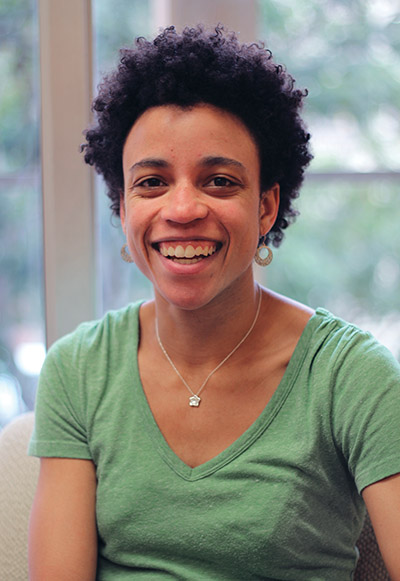 For third-year UCLA graduate student Jessica Watkins, the “big picture goal” has always been to travel to space as an astronaut. To achieve her dream meant intense physical training (she was part of Stanford’s 2008 international collegiate rugby championship team) and earning a Ph.D. in a research area relevant to space. Beginning her education as a mechanical engineer, she soon realized it wasn’t for her. Turning to a course bulletin for inspiration, she found classes about planets and atmospheres in Stanford’s Geological and Environmental Sciences department that would prove to suit her well.
For third-year UCLA graduate student Jessica Watkins, the “big picture goal” has always been to travel to space as an astronaut. To achieve her dream meant intense physical training (she was part of Stanford’s 2008 international collegiate rugby championship team) and earning a Ph.D. in a research area relevant to space. Beginning her education as a mechanical engineer, she soon realized it wasn’t for her. Turning to a course bulletin for inspiration, she found classes about planets and atmospheres in Stanford’s Geological and Environmental Sciences department that would prove to suit her well.
Presently, Watkins works with her advisor, UCLA Professor An Yin, to understand massive landslides in Mars’ Valles Marineris, a network of canyons the size of the continental United States. Using images and data from NASA’s Mars Reconnaissance Orbiter and satellite images of Earth for comparison, she attempts to determine whether the cause of Martian landslides is tectonic activity, flowing water, glaciers, or something else. Accordingly, Watkins is trying to determine if any of the minerals in her landslides are hydrated, or wet. Although she is not studying the astrobiological aspects of the minerals, she said her work is “one small study that could tell us a lot,” including information about the habitability of Mars.
Watkins also examines landslides up close to understand how to best interpret images of Mars’ landslides. During a recent field investigation of a Mars-like landslide in Death Valley National Park, Watkins was surprised that some of her preliminary image interpretations were incorrect. “There are many things about other planets that we might not be able to truly understand just from images,” she said. “Being able to walk around and get your hands on it really makes a difference.”
That’s what drew Watkins to planetary geology. “UCLA merges geology and planetary science really well,” she said. “I can use my Earth geology background to study other planets.” This summer, Watkins will collaborate with Mars Science Laboratory (MSL) scientists at the Jet Propulsion Laboratory (JPL) in Pasadena, California in hopes of improving our understanding of Mars’ surface. In retrospect, Watkins realizes she has always been interested in Mars. “My earliest memory of being interested in Mars was in fifth grade,” she said. “We had to make illustrated books – I wrote mine on Marty the Martian.”
Watch a video profile of Jessica Watkins here. Learn more about her research here.
